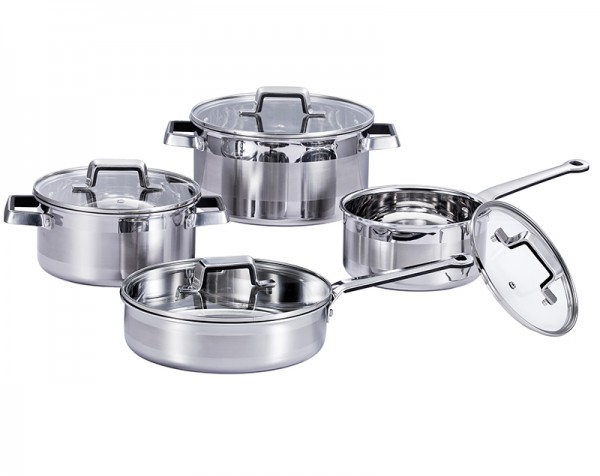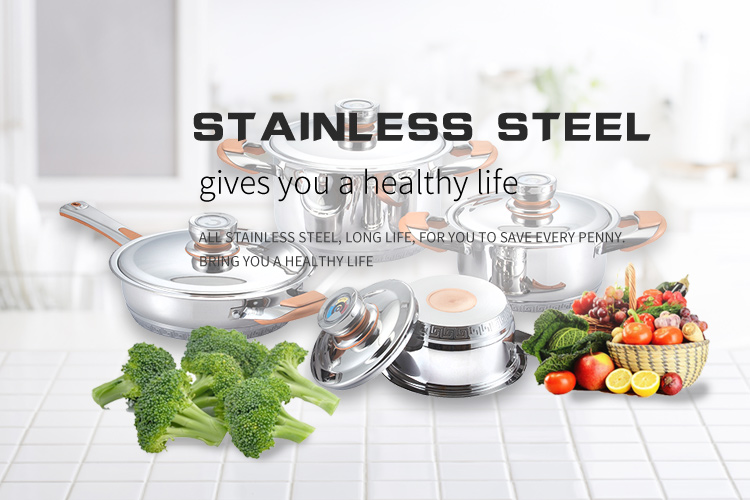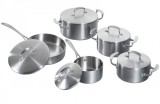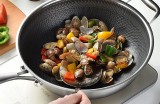Purchase and maintenance of stainless steel kitchenware
304 stainless steel is a nationally recognized food-grade stainless steel. Because the special feature of stainless steel is determined by two elements, which are chromium and nickel. Without chromium, there is no stainless steel, and the amount of nickel determines the value of stainless steel. The reason why 304 stainless steel kitchenware can maintain its luster in the air and is not easy to rust is because it contains a certain amount of chromium alloy elements (not less than 10.5%), which can make the surface of the steel form a strong layer that is insoluble in certain media. Oxide film.
After nickel is added, the performance of stainless steel kitchenware is further improved. It has good chemical stability in air, water, and steam, and it has sufficient stability in many kinds of acid, alkali, and salt aqueous solutions, even at high temperatures. Or in a low temperature environment, it can still maintain its advantages of corrosion resistance.
People often ask 304 stainless steel kitchenware really will not rust? 304 stainless steel kitchenware is not rust-proof, it is less prone to rust than other steel kitchenware. 304 stainless steel mainly relies on a very thin, strong, dense and stable chromium-rich oxide film (protective film) formed on its surface to prevent oxygen atoms from continuing to penetrate and continue to oxidize, thereby obtaining the ability to resist rust. Once this film is destroyed for some reason, oxygen atoms in the air or liquid will continue to infiltrate or iron atoms in the metal will continue to ionize, forming loose iron oxide, and the surface of stainless steel kitchenware will continue to be rusted. There are many forms of damage to this surface film, and the following are more common in daily kitchen activities:
1. Decoration impurities: Alkaline water, lime water and oil stains on the decoration walls remain on the surface of stainless steel. Failure to clean them in time will cause local corrosion and rust spots.
2. Iron objects: iron nails, iron wires and other iron tools left on stainless steel kitchen utensils for a long time will cause surface rust and yellow spots.
3. Organic juice: chemical agents, cleaning agents, paints, sauces, oil stains, tea leaves, etc. remain on the surface of stainless steel kitchenware for a long time, causing mildew, discoloration and local corrosion.
4. Metal dust: Metal dust with minerals or acids and alkalis in the house falls on the surface of stainless steel kitchenware. When it encounters humid gas and condensed water between stainless steel, it causes electrochemical reactions to form maculas and rust spots.
5. Water pipe impurities: there are iron filings and rusty water in the water pipe. When these impurities stay on the surface of the stainless steel and are not washed in time, rust spots and rust spots will appear.

So how to maintain 304 stainless steel kitchenware so that it is not easy to rust? Today I will introduce several methods to you for your reference.
1. Wipe off water stains before heating: When heating, sulfur dioxide and sulfur trioxide produced by combustion will produce sulfurous acid and sulfuric acid when they meet with water, which will affect the service life of stainless steel kitchenware.
2. Keep stainless steel kitchen utensils clean: remember to keep the kitchen utensils clean and scrub them frequently, especially after storing vinegar, soy sauce and other condiments, and keep the kitchen utensils dry. In this way, the kitchenware will not be corroded and appear flaws, and it can maintain a beautiful image.
3. Applying vegetable oil can extend the life of stainless steel kitchenware: Before use, you can apply a thin layer of vegetable oil on the surface of the kitchenware, and then dry it on the fire, which is equivalent to putting a protective film on the surface of the kitchenware. In this way, it is easy to clean in use and can extend the service life.
4. Do not use strong alkalis for cleaning: do not use strong alkaline or strong oxidizing baking soda, bleaching powder, etc. for cleaning
Jiangmen Jida Stainless Steel Products Co., Ltd. has been focusing on the research and development and production of stainless steel cookware for many years. It is professional because of its focus. Including wide-side pot series, trim-side pot series, composite steel pot series, hotel pot series, special-shaped pot series and so on. The products have passed a series of standard tests such as LGA, LFGB, FDA, etc., winning the love of our customers.
(Some materials on this website come from the Internet. If the information displayed on this website infringes your copyright or other legal rights, please notify us in time, and this website will be deleted in time.)





